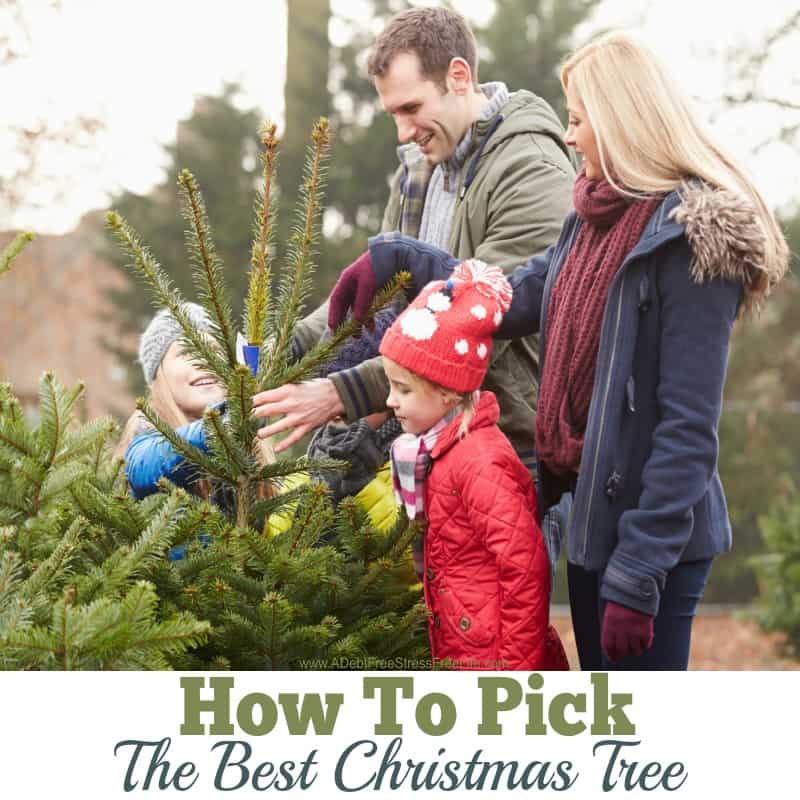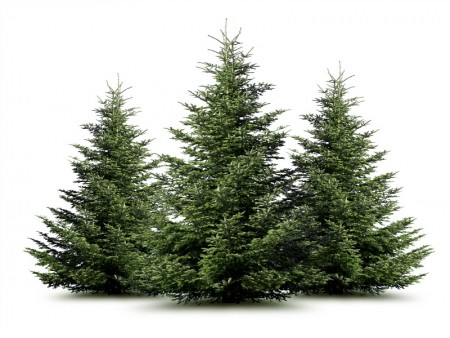A Mess Free Life may collect a share of sales or other compensation from the links on this page.
When I was a kid, my family would have its annual fight over the Christmas Tree.
Inevitably my father would want this little six-foot tree, and we kids would all want an eight-footer. Of course, we always won over my dad with our pleas. He was pretty easy-going, and sometimes I wonder if it was just a game with him; something we could look back on years later with laughter.
Flash forward, and I always loved a big Christmas tree. I didn’t mind having to lug out the ladder to get to the top. To me, it was part of the process.
As I get a little older, I like to avoid a step stool or ladder at all costs and now get a tree that’s around the six-footer my father always pleaded us to get. It’s funny – I guess I turned into my dad!

Table of Contents
What You Need To Know To Pick The Best Christmas Tree
Back then, a tree was a tree, was a tree. There wasn’t much distinction between them.
If you got less than a stellar tree, you knew the part with the hole could either be filled with a large ornament or put up against the wall where it wouldn’t be seen.
Today, there are lots of differences between trees, and more often than not, you’re paying top dollar for something less than a premium Christmas Tree.
First, let’s discuss the differences between a Balsam and Frasier Fir.
A Balsam Tree is very fragrant and makes the whole house smell like Christmas. You immediately know when you walk into the room that the tree is up.
A Frasier Fir doesn’t smell much but instead holds its needles longer than the balsam.
So the first decision you need to make it whether you want the needles to stay on longer or if you want the house to smell like Christmas time.
I opt for the Frasier Fir because I typically put up my tree right after Thanksgiving and keep it up until New Years Day. But if you’re one of those people who put it up much later in December, you might want to opt for the fragrance over needle longevity.
Once you’ve determined what type of tree you wish to purchase, there’re a few things you need to know about trees and how they are graded.
Trees are graded from Premium through Grade 2.
Let’s start from the worst to best.
Culls
In a nutshell, a cull is a Charlie Brown Christmas Tree. We all have an image of that, so no further explanation is needed. And unlike the part in the show where the gang dresses up the tree and gives it lots of love only to miraculously turn it into a premium looking Christmas Tree, that won’t happen with a cull.
Read: How To Accomplish A Stress-Free Holiday Shopping Experience
Grade 2
Grade 2 trees are trees that are light on the density scale meaning they are not lush and thick trees.
Some people like the idea that a tree isn’t so thick because it provides more space for the ornaments. You can certainly keep this in mind when choosing a tree but realize that if you select a tree that is a bit skimpy, you’re selecting a grade 2 tree.
The second issue with grade 2 trees is the defects on the tree. The regulation states: “Two adjacent faces with not more than three minor flaws. Remaining faces may not have more than two noticeable defects.
What this means, in essence, is that they’ll be no more than 3 “holes” in the two adjacent faces of the tree, but with an additional two defects in the remaining sections of the tree.
We all know what a “hole” on a Christmas tree looks like. It’s that spot on the tree that you’re not sure if you have an ornament big enough to fill in the spot. Or, you know exactly the ornament that will cover the hole. Either way, grade 2 trees have holes.
I don’t know about you, but that sounds like a lot of defects.
I would pass on grade 2 trees, but realize many Christmas Tree lots sell many grades 2 trees – and they don’t discount the price either because they’re hoping you don’t know a thing about the classes of Christmas trees.
Read: How To Give Generously When You Don’t Have A Nickel To Spare
Grade 1
The significant difference between a grade 1 and grade 2 tree has to do with defects and the density of the tree.
Grade 1 trees need to have not less than medium density. So they’ll be thicker and fuller than the grade 1 trees.
Grade 1 trees also must have three faces with not more than two minor defects and the remaining face may not have more than one noticeable defect. That is way fewer holes for sure. But still too many holes for my liking.
Which brings us to the premium tree.
Read: How To Create A Values Based Christmas This Year
Premium Grade
Here’s what you get when you buy a premium grade Christmas Tree: You get a thick density tree. So you’re going to have a super lush and thick tree, great for holding all those lights.
Additionally, the most defects you’ll see a premium is two.
I can tell you, often premium trees have no defects.
My tree this year is defect free and the tree I purchased last year was even prettier. Both were premiums.
So when you head out to buy your tree, make sure you know what you’re paying for.
Don’t pay top dollar for a tree that’s Grade 2, when what you want is a premium tree.
Happy Christmas Tree Shopping!



